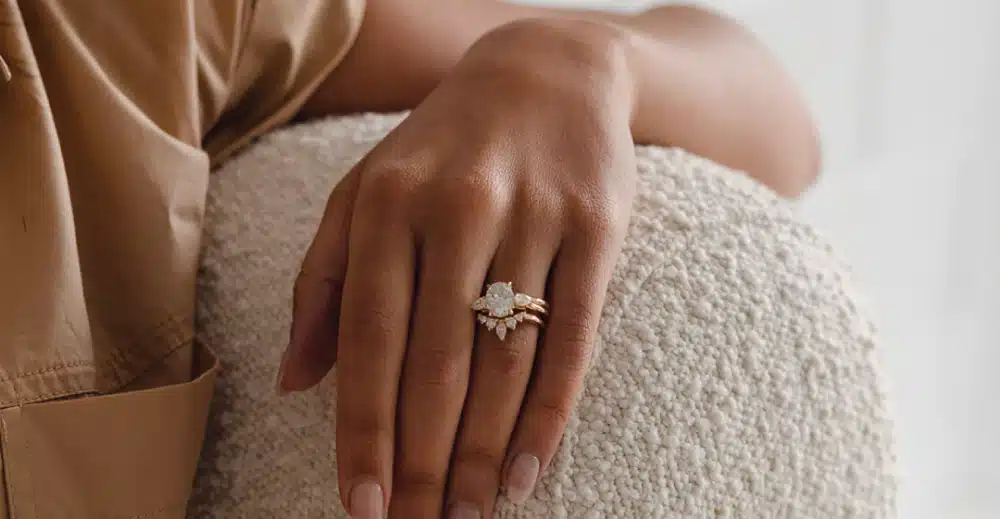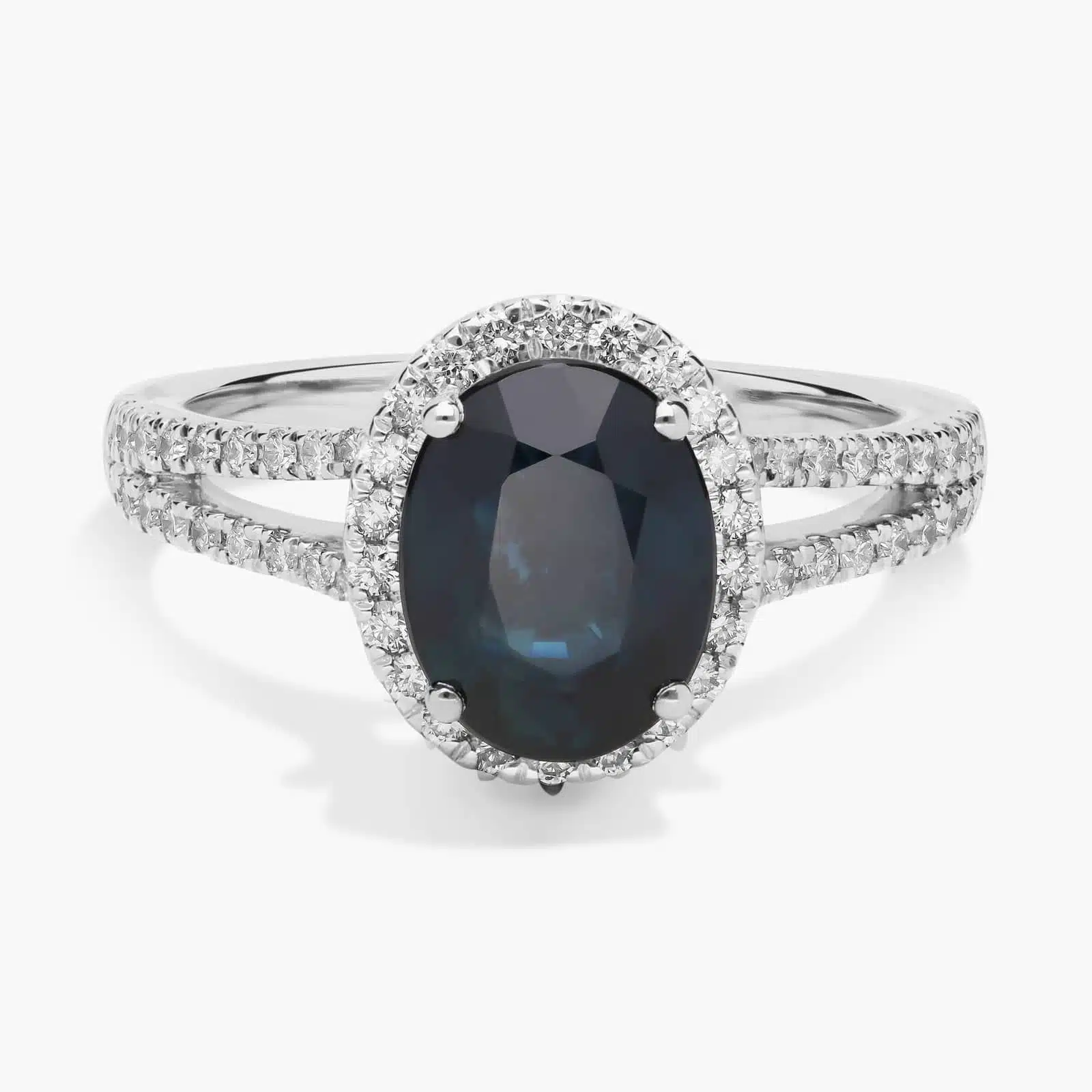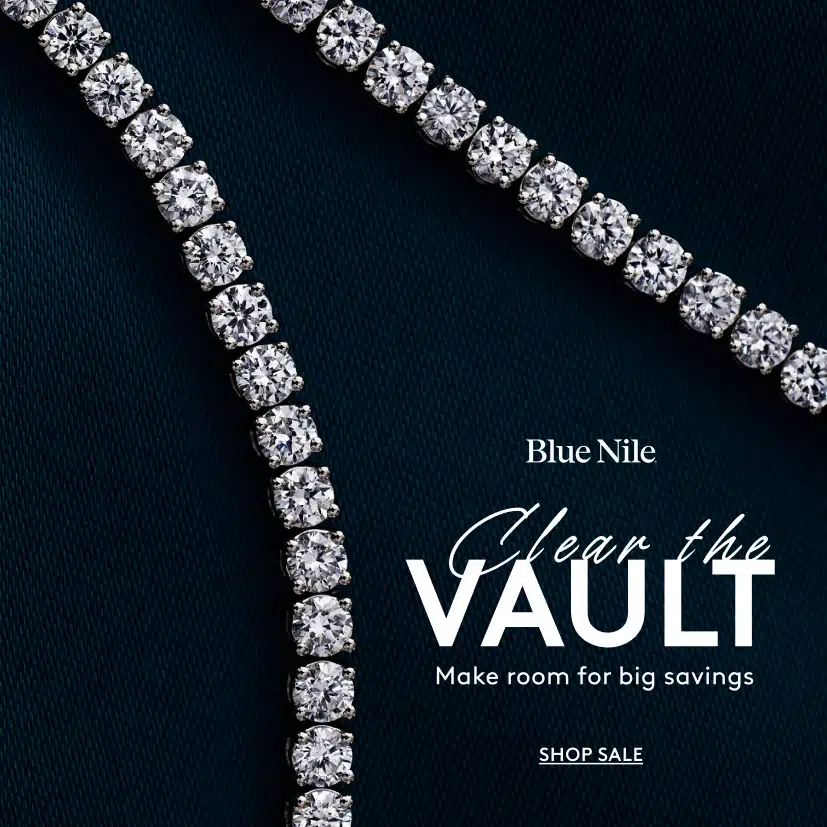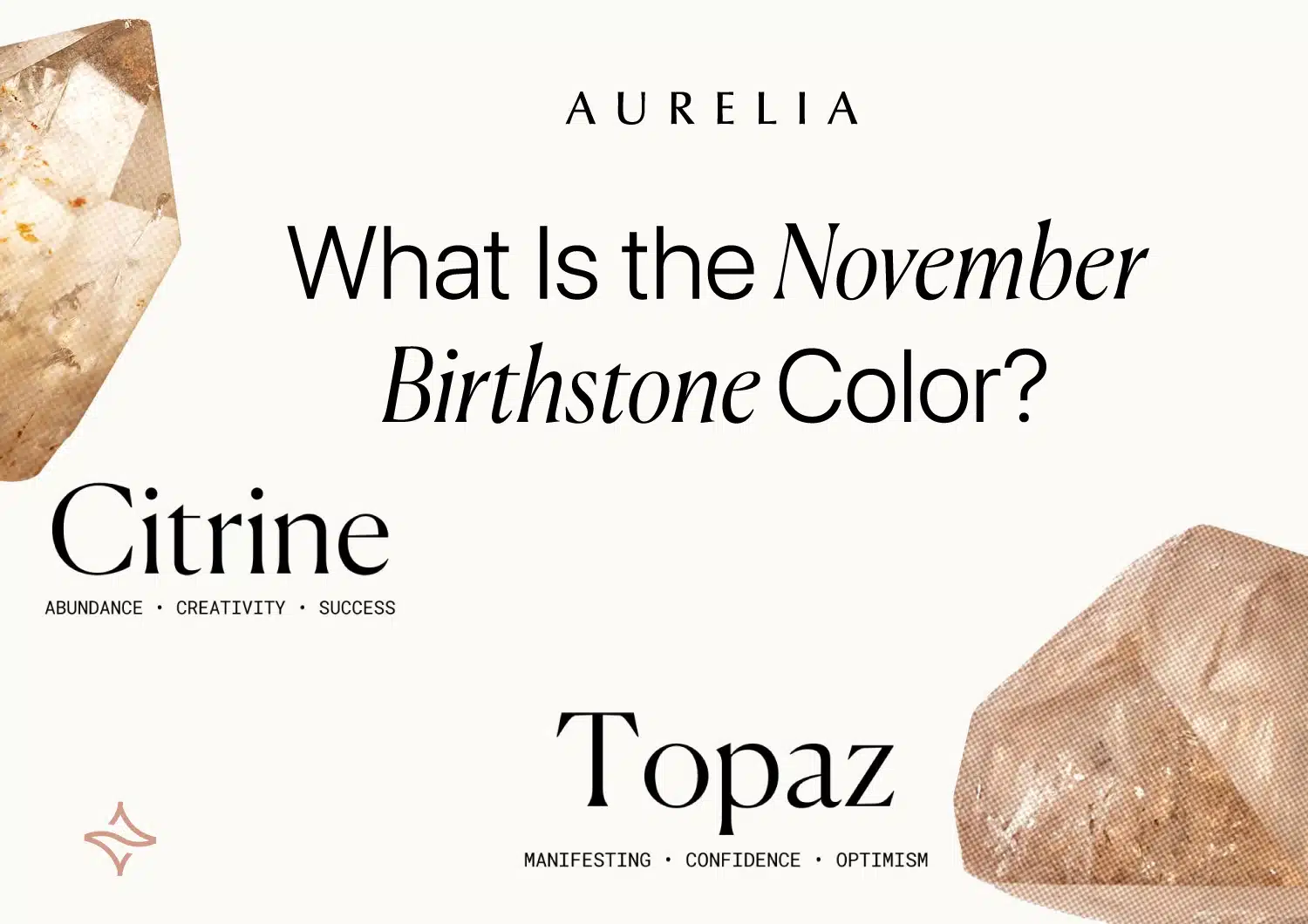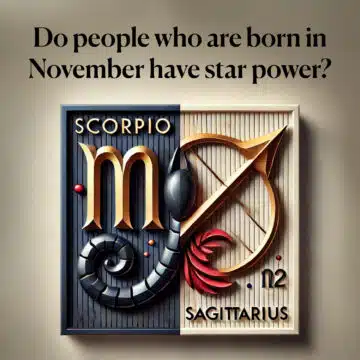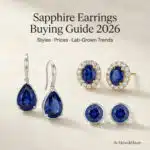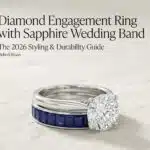The primary colors of the birthstones for November are the warm, sunny yellows and golden oranges of citrine and the fiery honey-brown and golden hues of topaz.
I’m Mehedi, and November is a lucky month, offering not one, but two spectacular birthstones that perfectly capture the rich, glowing colors of autumn. While many months have a single signature gem, November-born individuals get to choose between two golden beauties that are as brilliant as they are historically significant.
But the story doesn’t end with a simple color palette. We’re not just answering the question of color. We’ll dive deep into why there are two stones, uncover their incredible histories, and finally clear up the age-old confusion that has linked citrine and topaz for centuries.
So, if you’re a November baby with either a Scorpio or Sagittarius sun sign, or are simply captivated by these autumnal gems, get ready for the complete story.
What Are the Birthstones for November? The Golden Duo
One of the most common questions I get is, “What is the birthstone for November?” It’s a great question because, unlike many other months, the answer isn’t a single stone.
For centuries, most months were represented by a single gem, like the magnificent Ruby, the July birthstone. November, however, offers a beautiful choice between two stunning gems that share a golden color palette.
Why Does November Have Two Birthstones? A Tale of Tradition and Accessibility
Historically, the sole, traditional stone for the month of November was Topaz. Precious golden topaz, with its fiery brilliance, was highly prized by aristocrats and royalty for centuries. The problem? Genuine, high-quality topaz was relatively rare, and for hundreds of years, any number of golden-yellow stones were often confused with it or sold as such.
This long-standing confusion led to a landmark decision. In 1952, the Jewelry Industry Council of America officially added Citrine to the list as an alternative November birthstone. Topaz was first established as the November birthstone on the original American list created by the Jewelers of America in 1912.
This was a brilliant move for two reasons:
- It honored history: It acknowledged that Citrine and Topaz had been intertwined for centuries.
- It embraced accessibility: It made the beautiful November birthstone color accessible to a much wider audience. Citrine, with its gorgeous sunny hues and more wallet-friendly price point, was the perfect choice.
This move gave people born in November—who are said to have natural star power—two incredible options, a situation similar to December’s birthstone, which also offers multiple choices. So, when deciding between November birthstone Topaz and Citrine, you’re choosing between a rare, fiery treasure and a sunny, abundant beauty.
Here’s a simple breakdown of the choice you have:
| Feature | Topaz | Citrine |
| Traditional Status | The Original Birthstone | The Modern Alternative |
| Gemstone Rarity | Precious Varieties Are Rare | Abundant and Available |
| Primary Vibe | Fiery, Powerful Brilliance | Warm, Sunny Optimism |
| Market Position | A Prized, Precious Gem | An Accessible, Beautiful Quartz |
This distinction is key to appreciating what makes each of these November birthstones so special, a journey we will now embark on together.
Citrine – The Sunshine Stone
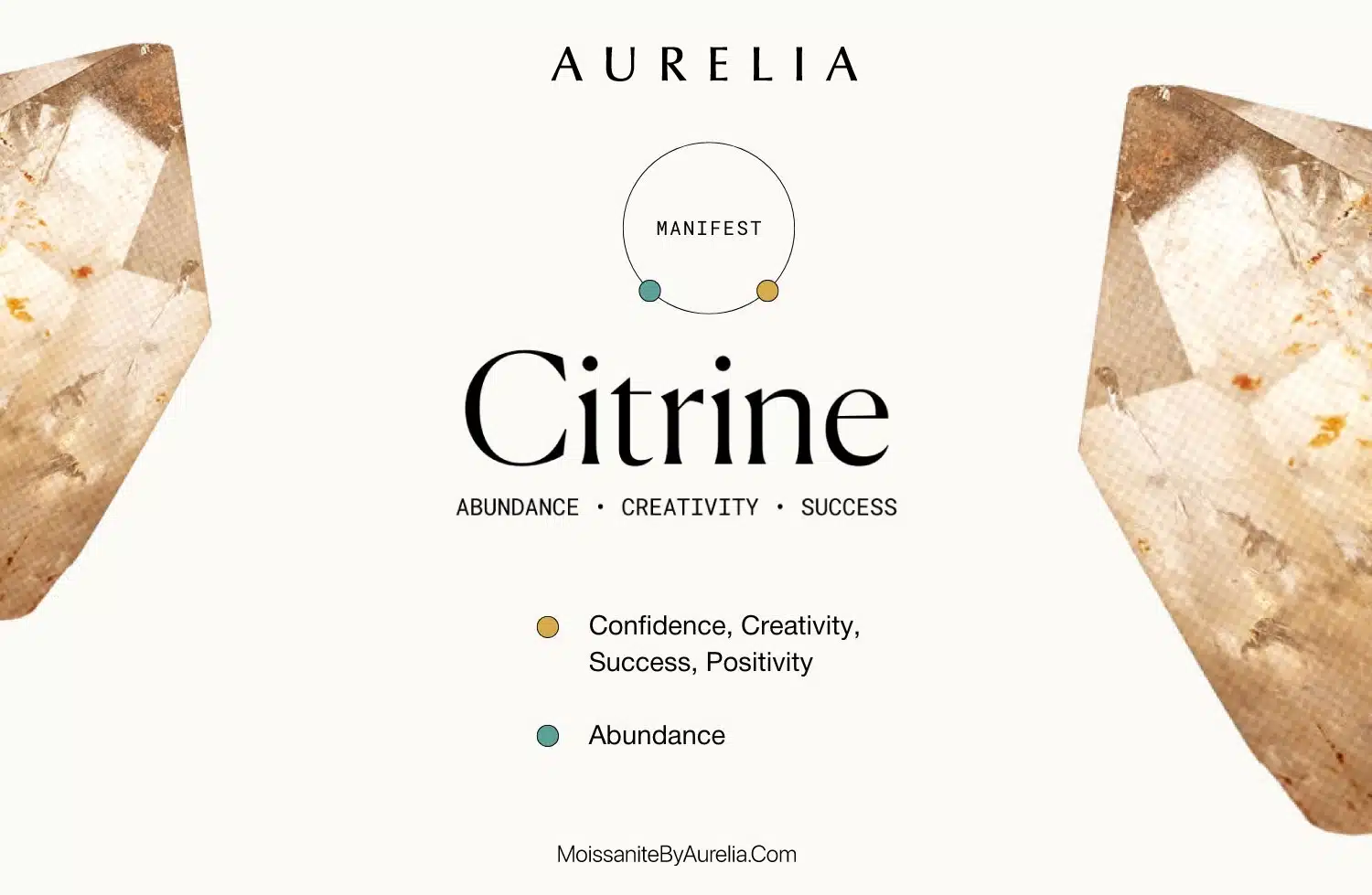
While Topaz may be the traditional stone, Citrine is the vibrant heart of the November birthstone color palette for many. It’s a gemstone that seems to have captured pure, liquid sunshine. As a member of the quartz family—the same family that gives us Amethyst and the beautiful formations of Spider Quartz—citrine is both stunning and thankfully, abundant.
What is the November Birthstone, Citrine? The “Merchant’s Stone”
At its core, what is a November birthstone like Citrine? It’s a variety of quartz celebrated for its gorgeous range of transparent yellow to brownish-orange colors. Its name, derived from the French word “citron,” meaning lemon, perfectly captures its zesty and joyful essence.
For centuries, its warm glow has made it a favorite, but it’s the stone’s long-held association with wealth and success that earned it a very special nickname.
| Feature | Description |
| Mineral | Quartz |
| Colors | Pale yellow to honey-orange |
| Meaning | Prosperity, Joy, Energy |
| Nickname | The Merchant’s Stone |
The Alluring Colors of Citrine: From Lemon to Madeira
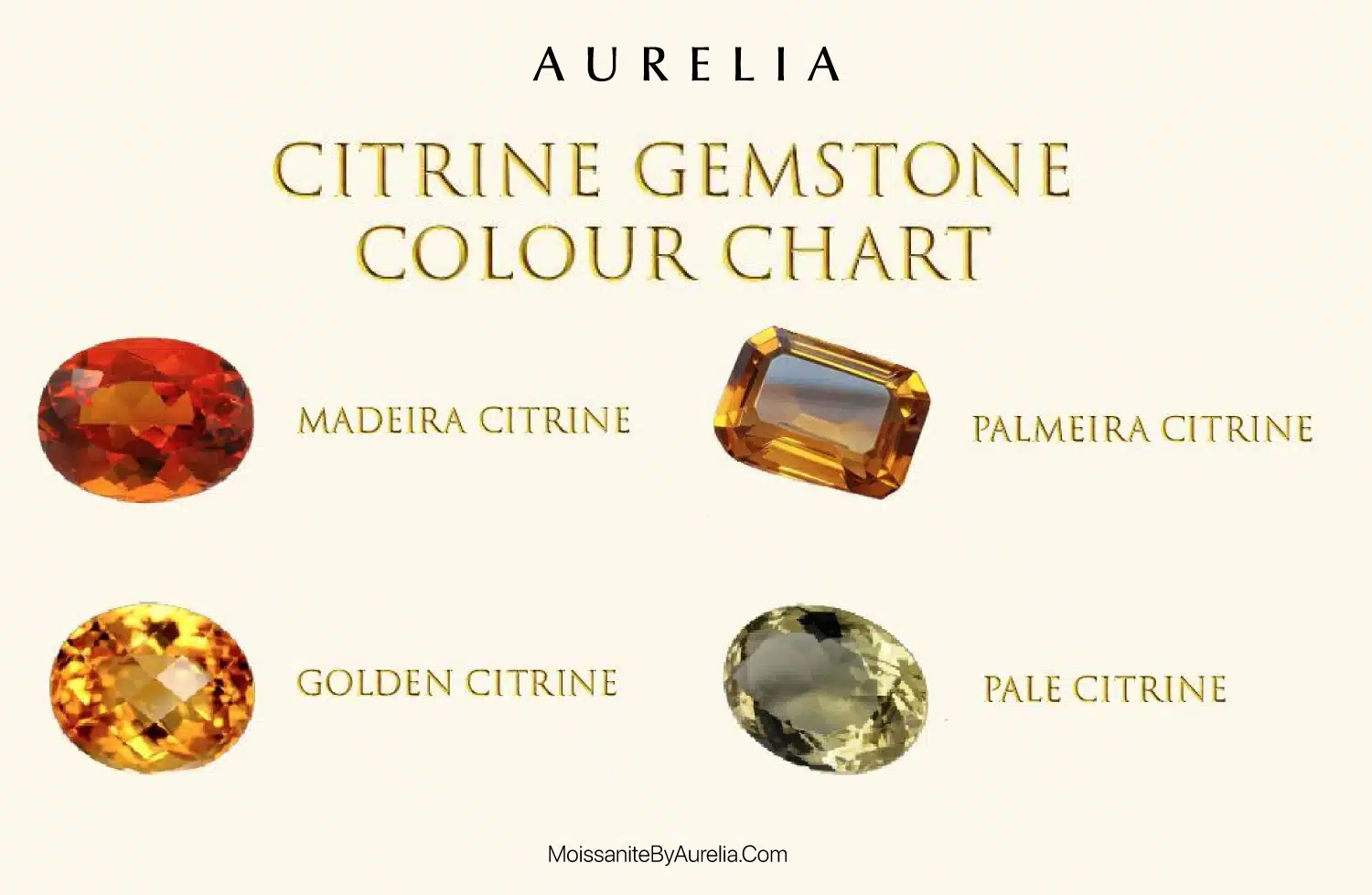
The true beauty of the November birthstone Citrine lies in its rich and varied color palette. The shades of this November stone color range from a delicate, pale yellow to a deep, honey-gold that glows from within.
The most sought-after and valuable shade is a deep, fiery reddish-orange known in the trade as “Madeira Citrine,” named for its resemblance to the rich color of Madeira wine.
It’s an important insider fact to know that natural, gem-quality citrine is actually quite rare in nature. The vast majority of the brilliant citrine you see on the market today is created by heat-treating other varieties of quartz, usually Amethyst or Smoky Quartz.
This is a permanent, stable, and completely accepted practice in the jewelry industry that unlocks the stunning golden hues hidden within the quartz crystal. Unlike some other quartz varieties, Citrine is stable and maintains its golden color, showing excellent resistance to fading from prolonged light exposure.
This process allows jewelers to create breathtaking pieces at an accessible price point. You can see this beauty in pieces like the stunning custom birthstone engagement rings for November available at James Allen, which often feature a magnificent central citrine. Similarly, you’ll find handsome November birthstone rings for men at Blue Nile that showcase the stone’s warm, confident energy.
Deal Alert: Fast-Shipping Gifts — Up to 50% Off* fine jewelry at Blue Nile !
One In A Lifetime Sale: “Clear The Vault” – Get up to 70% OFF on select jewelry at Blue Nile !
Exclusive Offer: Flash Sale on James Allen Up to 40% Off * Sitewide engagement ring settings & Fine Jewelry at James Allen .
The History and Meaning of the Citrine Birthstone
The love for what is the stone color for November is nothing new. Citrine’s history is as golden as its hue.
- Ancient Roots: The stone was revered by the Ancient Greeks and Romans, who believed it was crystallized sunshine. Roman priests would carve them into intricate intaglio rings, and they were often used to ward off evil thoughts and snake venom.
- Royal Popularity: Citrine’s fame exploded during the glamorous Art Deco period between the World Wars. Hollywood stars like Greta Garbo and Joan Crawford adorned themselves with large, dramatic citrine cocktail rings. The gem’s affordability and the fact it could be cut into large, clean facets made it perfect for the bold designs of the era.
- Metaphysical Properties: For centuries, Citrine has been believed to be a powerful manifesting stone. It’s thought to carry the pure energy of the sun, bringing light and joy to all areas of life.
It doesn’t hold or accumulate negative energy, but rather transmutes and dispels it, making it a powerfully protective stone.
This is why it’s called “The Merchant’s Stone”; shopkeepers would place it in their cash registers, believing it would not only attract wealth but help them maintain it.
Topaz – The Gem of Fire
Now we turn to the traditional, the original, the powerful stone for month of November: Topaz. If Citrine is captured sunshine, Topaz is captured fire.

This magnificent gem is a silicate mineral renowned in the jewelry world for its exceptional hardness (a very durable 8 on the Mohs scale) and a truly dazzling range of colors that goes far beyond its famous golden glow. It’s a versatile gem that has a color for every mood and season, far more than most people realize.
Is Blue Topaz a November Birthstone? Clarifying the Color Confusion
This is one of the most frequent questions I hear, and the answer is both yes and no. Is blue topaz a birthstone for November? Traditionally, no. The classic November birthstone color for Topaz is yellow, gold, or a warm sherry-brown.
However, Blue Topaz has become so immensely popular and widely available that many people now associate it with November. The reality is, Blue Topaz has been officially adopted as a primary birthstone for December, sharing the month with Tanzanite and Zircon.
So while you can choose it for a November birthday, its official home is the following month. It is also important to know that the vibrant blue colors are not typically natural; they are created by taking colorless or pale topaz and treating it with irradiation, a permanent and safe process that unlocks those stunning sky-blue hues.
What Color is the Topaz Stone? Beyond Just Golden
To truly appreciate what stone is November birthstone, you have to explore its full chromatic range. While the golden-yellow variety is the traditional star, the world of Topaz is a kaleidoscope of stunning options.

Imperial Topaz: The Rarest of All
At the absolute peak of the topaz world sits Imperial Topaz, a variety so prized that its name is tied to royalty.
- The most valuable variety.
- Fiery reddish-orange to pink.
- Named for 19th-century Russian Czars.
- Exceptionally rare and sought-after.
Precious & Sherry Topaz: The Traditional Hue
This is the classic topaz that started it all, representing the true, historical birthstone for November with its warm, fiery spirit.
- The original November birthstone.
- Intense yellow to golden-brown.
- Often called “Sherry Topaz.”
- Evokes a rich, warm energy.
Blue Topaz: The Popular Modern Choice
While not traditional for November, the popularity of Blue Topaz is undeniable, making it one of the top-selling blue gemstones in the world. For more about blue gems, see our guide on the September Birthstone, Sapphire.
- Officially a December birthstone.
- Created via irradiation treatment.
- Popular shades include Sky Blue.
- Deeper tones are Swiss & London Blue.
Mystic & Coated Topaz: The Rainbow Illusion
This category includes some of the most eye-catching colors, but it’s crucial to understand they are not natural to the stone.
- Color is a thin surface coating.
- Applied via a CVD process.
- Creates vibrant pinks, greens, purples.
- “Mystic Topaz” shows rainbow colors.
- Important: Not the stone’s real color.
White/Colorless Topaz
This is a naturally occurring variety that is often cut and polished to resemble a diamond.
- Often confused with diamond or white sapphire.
- A natural, untreated variety.
- Also used to create Mystic Topaz.
The History and Symbolism of the Topaz Birthstone
The lore behind what is November’s birthstone called Topaz is ancient and powerful. Its name is thought to derive either from the Greek island of Topazios in the Red Sea, or from the Sanskrit word “tapas,” which means “fire.”
For centuries, it was believed to hold immense power:
- Ancient Greeks used it for strength.
- They believed it could grant invisibility.
- Renaissance-era Europeans used it.
- They thought it could break magic spells.
- Also used to calm intense anger.
In modern times, the Topaz stone represents love, loyalty, and affection. Its fiery warmth is associated with friendship and is believed to bring joy and good fortune to those who wear it. Its rich history makes it a wonderful alternative to other classic stones like the May Birthstone, Emerald, for a truly meaningful piece of jewelry.
Citrine vs. Topaz: A November Birthstone Comparison
This is where we get to the heart of the matter. For centuries, these two beautiful golden gemstones were mistaken for one another. But as a modern, educated buyer, it is essential that you understand the difference between topaz and citrine.
While they may share a stunning autumn color palette, they are two entirely different minerals with their own unique properties, personalities, and price points.
What is the Difference Between Citrine and Topaz?
The best way to understand the key differences is to see them side-by-side. I’ve put together a simple chart that breaks down the most important distinctions you need to know.
| Feature | Citrine | Topaz |
| Mineral Family | Quartz (Silica) | Silicate |
| Hardness (Mohs) | 7 | 8 |
| Price Point | Generally more affordable | Precious varieties are valuable |
| Primary Colors | Yellow to brownish-orange | Golden-orange, yellow, brown |
| Key Trait | “The Merchant’s Stone” | “The Gem of Fire” |
As you can see, the differences are significant. Citrine is a member of the vast and abundant quartz family, while Topaz is its own distinct mineral species. This directly impacts their rarity and value. But the most critical difference for jewelry lovers is their durability.
Durability and Daily Wear: Which is a Better Choice?
When you’re investing in jewelry, you want to know how it will hold up. This is where the Mohs scale becomes critical. As one jeweler noted in a gem community discussion, Topaz is “a fairly tough stone that can look great with the right cut.” This is thanks to its excellent hardness.
Topaz Hardness: Built for Life
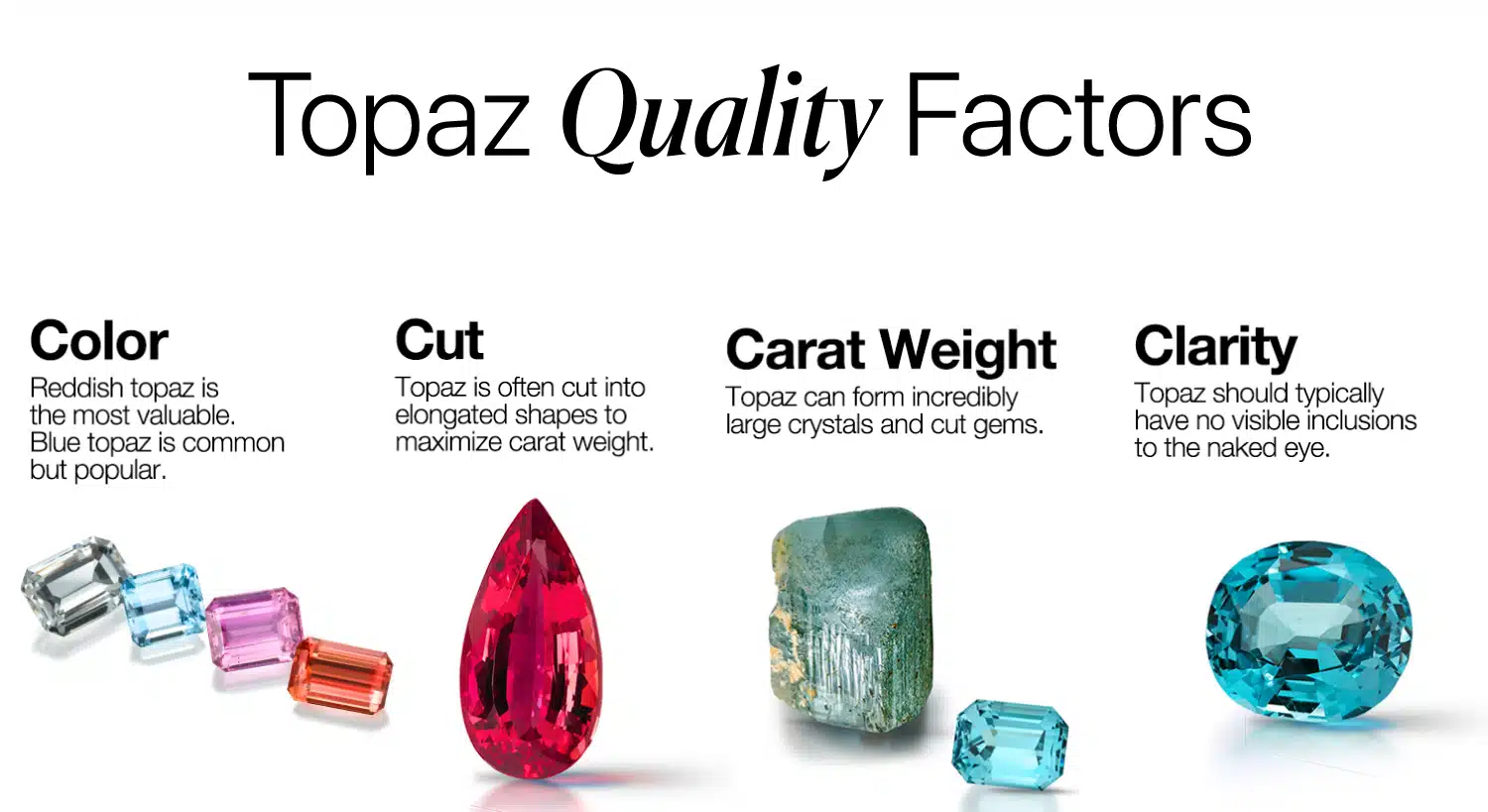
With a hardness of 8 on the Mohs scale, Topaz is a very tough and durable gemstone, making it an excellent choice for pieces meant for daily wear.
- Significantly more scratch-resistant.
- Ideal for engagement rings.
- Perfect for signature bracelets.
- Can withstand everyday impacts.
Citrine Hardness: Beautiful, But Use with Care
With a hardness of 7 on the Mohs scale, Citrine is still durable but requires more mindful wear as it can be scratched by common objects. Understanding how to handle gem damage is crucial, as I explain in my guide on how to repair scratched peridot.
- Durable enough for jewelry.
- More susceptible to scratching.
- Best for pendants and earrings.
- Great for occasional-wear rings.
The bottom line: both are strong enough for jewelry, but if you’re planning a piece for everyday wear, Topaz has the clear advantage in durability.
Is Citrine the Same as Topaz? Clearing up an Age-Old Confusion
So, are topaz and citrine the same? The answer is an emphatic and absolute no. But it’s easy to see why the confusion existed for so long.
Before modern gemology, stones were identified by color. Because both displayed beautiful shades of yellow and gold, they were often grouped together. To capitalize on the higher value of Topaz, merchants would frequently sell the more abundant Citrine under misleading trade names.
This is a classic issue of authenticity, similar to the questions I cover in my guide on how to test if a garnet is real.
Here are the historical misnomers to watch out for:
- “Bohemian Topaz”
- “Gold Topaz”
- “Madeira Topaz” (when referring to citrine)
- “Spanish Topaz”
These are all names for Citrine. The key takeaway is this: Citrine and Topaz are two entirely different, beautiful minerals, each with its own unique history and value. Knowing the difference empowers you to buy with confidence.
Practical Guidance for November Birthstone Jewelry
Owning a beautiful gemstone is a joy, and ensuring it lasts a lifetime is a responsibility. Proper care is essential for every gem, from the delicate beauty of June’s birthstone, the pearl, to the regal strength of a sapphire. Luckily, caring for your Topaz and Citrine jewelry is straightforward when you know the rules.
The Best Way to Clean Your Gems
The safest and most effective way to keep your November birthstones sparkling is with simple, gentle cleaning at home.
- Use a mild dish soap.
- Mix with warm, not hot, water.
- Scrub gently with a soft toothbrush.
- Rinse the stone thoroughly.
- Pat dry with a soft, lint-free cloth.
A Special Warning for Topaz
Topaz requires special care because it has “perfect cleavage,” meaning it can be prone to fracturing from a sharp blow or extreme temperature change.
- Never use steam cleaners.
- Avoid ultrasonic cleaners.
- Sudden high heat can cause cracks.
- These methods can damage treatments.
Protecting the Beautiful Color of Both Stones
The stunning color of your gemstones, especially in a treated or vibrant stone like an October opal, can be sensitive to the environment.
- Avoid prolonged, direct sunlight.
- Keep away from harsh chemicals.
- Remove jewelry before swimming.
- Take rings off before cleaning.
The Golden Rule of Storage
Proper storage is the number one way to prevent accidental damage and scratches to all your precious jewelry.
- Store pieces in a fabric-lined box.
- Use separate soft pouches for each.
- Prevents scratching from harder gems.
- Keeps chains and necklaces tangle-free.
November Birthstones for Scorpio and Sagittarius
A birthstone is more than just a beautiful gem; it’s a personal talisman. For those born in November, the choice of stone can be guided by their zodiac sign, as each gem offers a unique energy that resonates differently with the passionate Scorpio and the adventurous Sagittarius.
What is the Birthstone for a Scorpio Born in November?
November Scorpios (born between October 23rd and November 21st) are known for their deep intensity, loyalty, and powerful emotions. Both Topaz and Citrine offer wonderful supportive energies for this dynamic water sign. The choice often comes down to what energy the Scorpio wishes to cultivate.
Citrine for the Scorpio Soul
Citrine’s sunny disposition offers a beautiful counterbalance to Scorpio’s profound emotional depths, much like the serene energy of the Amethyst for February can bring clarity.
- Promotes bright, positive energy.
- Helps to dispel negativity.
- Gently eases intense feelings.
- Encourages optimism and joy.
Topaz for the Scorpio Spirit
The traditional Topaz resonates with Scorpio’s core strengths, offering energies that fortify and soothe their powerful inner world.
- Soothes and calms strong emotions.
- Believed to enhance inner strength.
- Symbolizes love and loyalty.
- Offers a protective, grounding force.
And What About the Sagittarius November Birthstone?
For those born under the sign of Sagittarius (November 22nd to December 21st), the energy is one of optimism, adventure, and expansive growth. While Topaz is a beautiful choice, Citrine is a particularly perfect match for the Archer.
Citrine for the Archer’s Ambition
Ruled by the lucky planet Jupiter, Sagittarians are known for their big dreams. Citrine, often called the “Success Stone,” is a powerful tool for manifesting those ambitions into reality. It has a vibrant energy, much like a stunning piece of Orange Agate.
- Known as the “Success Stone.”
- Aligns with Sagittarius’ natural luck.
- Helps focus expansive energy.
- A powerful tool for manifestation.
- Attracts abundance and prosperity.
The November Birth Flower and Other Symbols
To get the full picture of the month’s symbolism, we must also look beyond the stones to the beautiful flower that represents November.
What is the Birthstone and Flower for November?
The official birth flower for November is the lovely and resilient Chrysanthemum, often affectionately called “mum.” This flower has a rich history dating back centuries and is cherished worldwide for its vibrant colors and diverse forms. Its meaning aligns perfectly with the golden energies of Topaz and Citrine.
The Symbolism of the Chrysanthemum
Much like the timeless symbolism of the Garnet for January, the chrysanthemum is layered with positive meaning across different cultures.
- Universally symbolizes joy and optimism.
- Represents devoted love and friendship.
- In Asia, it signifies a long life.
- Often seen as a symbol of the sun.
A Perfect Symbolic Match
It’s no coincidence that the flower for November shares the same core meanings as its birthstones, creating a harmonious trio of symbols.
- The mum’s joy mirrors Citrine’s energy.
- Its loyalty reflects Topaz’s symbolism.
- Golden varieties match the gem colors.
- Together they represent a cheerful month.
Frequently Asked Questions About the November Birthstone
Conclusion
So, what is the color of the birthstone for November? It’s not one single color, but a whole spectrum of warm, radiant light. It’s the sunny, cheerful yellow of Citrine and the fiery, golden-orange of traditional Topaz. November is a special month that offers a choice between two magnificent, yet entirely distinct, gemstones.
Whether you find yourself drawn to the joyful, abundant energy of Citrine—the “Success Stone”—or the fiery, loving, and durable symbolism of Topaz—the “Gem of Fire”—you are choosing a gem that perfectly reflects the season.
Both stones capture the last warm glow of autumn, radiating light and friendship as we head into the cooler months. They are a beautiful reminder that even as the days grow shorter, there is still incredible warmth and brilliance to be found.
Continue Your Research: Your Next Steps in the World of Gems
Now that you’re an expert on November’s beautiful birthstones, your journey into the fascinating world of colored gemstones is just beginning. Here are some of my most trusted guides to help you explore further and deepen your knowledge.
Explore Other Birthstones
Each month has a story to tell through its unique gemstone. Discover the magic of the others.
- Uncover the Allure of the July Birthstone: Ruby
- Discover the Royal September Birthstone: Sapphire
- Delve into the Mystical October Birthstone: Opal
- Learn About the Unique June Birthstone: Pearl
Gemstone Essentials
Go deeper into the world of colored gems and learn what makes each one unique.
- Learn Exactly What a Sapphire is Made Of
- A Deep Dive into the Rare Padparadscha Sapphire
- Compare the Differences Between Lab-Created vs. Real Sapphire
- Understand How Pearls are Valued with the 7 GIA Factors
Become a Savvy Buyer
Empower yourself with the knowledge to buy the jewelry of your dreams with confidence.
- Explore Beautiful and Affordable Colored Engagement Rings Under $200
- Your Complete Guide to Moonstone Wedding Rings
- Discover Stunning Real Gem Necklaces


